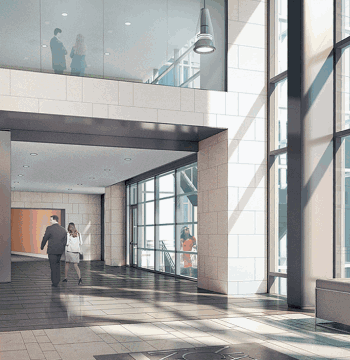19 Nov


The past 18 months of the pandemic forced us to look hard at our old habits.
And as we looked closely, we saw that there were several gaps that could be bridged with simple, effective technology.
Medical response, drug and vaccine administration, remote working, online education, visitor management systems, access control systems—and much more—have been explored to a deeper extent since we were tested by the COVID-19 virus.
In the realm of visitor management systems (VMS), the gaps were evident from the start, and evolution was inevitable.
The first gap was the lack of authentication within these systems. No VMS is complete without authenticating its visitors into known variables on their database. Thus, was born VAMS®, a Visitor and Authentication Management System. The second gap was versatility. VAMS® went from a system of mere control to a system of integrated access control, visitor care, and organizational curation.
These gaps needed bridging so that the concept could widen its scope.
Why Visitor Management Systems Became an Integral Part of Access Control
As they say, “Necessity is the mother of invention.”
With the general tone of fear surrounding the pandemic, safety and health became a necessity. Business owners, building managers, and human resource managers became far more receptive to the idea of spending money to purchase a stringent VAMS® integrated into their overall access control system.
Design disruption was the way forward, and this new movement not only tightened security and health issues, but also opened up the door to possibilities in the way workplaces and commercial buildings are run.
In 2021, the need of the hour was to restrain our addiction to “business as usual.” How could we turn a blind eye to the fact that high urban densities did not go well with pandemics and daily security issues? Ask any urban planner, and their prediction for the future would be that we now need to evolve our principles of intelligent design to accommodate for new variables and let go of old practices.
If the “Age of Quarantine” taught us anything, it was that we had to be more careful about who we admit into our living spaces—their biodata, their medical history, their qualifications, and their basic identity. We needed to change old habits. But, before we could loosen our grips on old habits, we needed brainstorming. We needed to think over the newer concepts that could be put into practice to improve urban society.
We needed alternatives—a new movement.
The Movement From “Control” to “Care”
We are now recalibrating spaces to fit new modes of work, such as the hybrid mode, a mix between remote work-from-home modes and traditional workplace modes.
Within this framework, there are a few new concepts emerging, that are changing the objective of VAMS® from control to care.
In the simplest terms, VAMS® will now be used to care for people rather than just control them at entry points and exit points. The flexibility in the design of VAMS®—which are largely software as a service (SaaS)—now will allow several new things to matter.
What will matter now that did not matter before?
● Organization: Every aspect of human activity in the building will need organizing. There could be control rooms, conference rooms, auditoriums, classrooms, task areas, each of which will need a unique way of organizing human movement into a dignified, steady flow. Overcrowding is one aspect that should be avoided whenever possible and using technology to tally the total number of people in the building is information that can be useful to such an objective.
● Maintenance & Deliveries: There is a steady supply of maintenance staff in every building, workers who need regular access, and whose jobs would be made easier if they were also integrated into VAMS®. There are also regular vendors, caterers, delivery men, and distributors who may frequent a workplace to offer their daily services. The VAMS® of the future would do well to take them into consideration.
● Health Screening: As is obvious, the ability to integrate VAMS® with electronic units that analyze body temperature has been there for a while. This eliminates the subjectivity around the recognition of feverish and symptomatic visitors by security services. Visitors are also made to take health screening questionnaires (HSQs) so that security services know whether they should be admitted or not. These HSQs can be handy in case of a lawsuit in which a visitor infected people within your workplace despite knowing they were ill. The need for it is clearly increasing in nations all over the world.
● Real-time Analytics: Visitor management operations, when informed by real-time data, improve. If 5 HVAC contractors swipe into a workplace’s Air Handling Unit (AHU) and only 4 log out, you can immediately know that there is 1 guy left on your premises, from a central dashboard. As long as managers use value-driven parameters for their visitor management data collection, they can streamline their entire workplace.
● Record Keeping: Any workplace will benefit from curating an overarching system of records, which can then be used in case of insurance, compliance, payroll, and analysis issues. Whenever a visitor logs in and logs out, and their time logs, purpose of visit, and other data populates the various parts of the system.
Within the whole scope of urban informatics, an evolved version of a VAMS® that incorporates the above 5 needs would pair well with modern facilities such as integrated ticketing.
Smartphone authentication, radio-frequency identification (RFID), magnetic stripe cards, and smart cards have been used in these industries for years now. As long as they spend the bare minimum of time to understand this simple technology, real estate developers, building owners, and business owners all over the world will soon be satisfied with the all-round layer of security and care provided to their inhabitants. This is the difference between a community of the future and a community filled with fear, uncertainty, and doubt.

Subscribe to our Newsletter
HEAD OFFICE
VAMS Safeguard Pvt. Ltd.
+91 22-4170-7575 [email protected]C-209/210, Mittal Commercia Premises Co. Op. Soc. Ltd., Near Mittal Estate, Andheri East, Mumbai – 400059
HEAD OFFICE
Suite 1902, 1212, Avenue Of the Americas, New York, NY 10036
© 2025 by VAMS GLOBAL.






